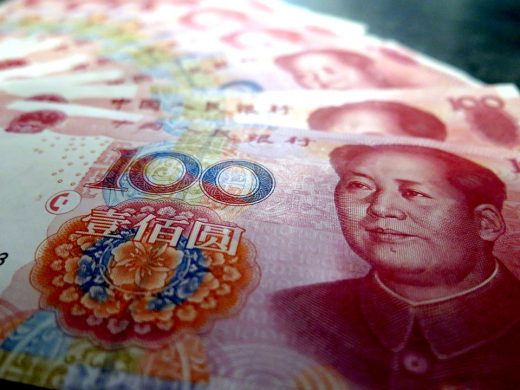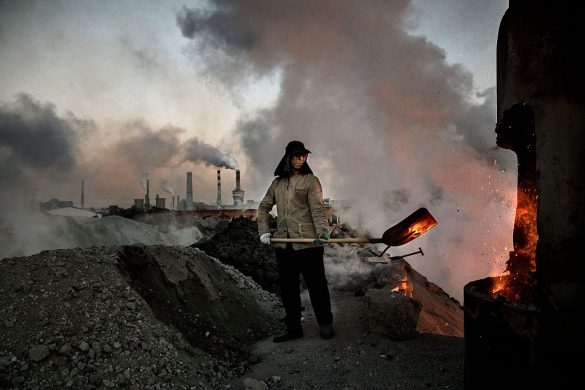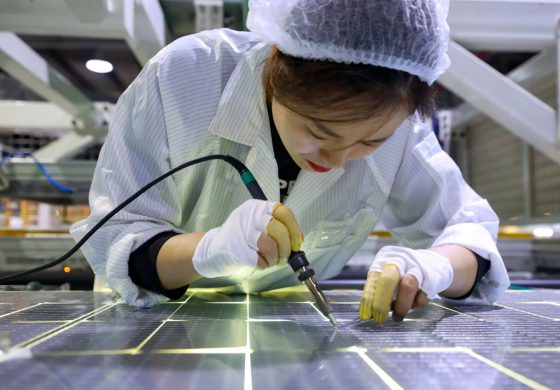Det fremgår af en pressemeddelelse fra Institute for Energy Economics and Financial Analysis fredag:
Friday January 6, 2017: New analysis shows China is securing clear global dominance in renewable energy and related technologies, making a record US$32bn of overseas investment deals in 2016 alone.
Marking a 60% year-on-year rise in spending, the accompanying report – China’s Global Renewables Expansion – by the Institute for Energy Economics and Financial Analysis (IEEFA) assessed all sector deals in excess of US$1bn.
The scale and growth of this investment charts China’s rising global leadership in clean energy industries and infrastructure, plus the associated supply chains.
The report also shows how the outcome of the U.S. election means the country is likely to fall further behind China’s global lead in industries of the future.
“The U.S. is already slipping well behind China in the race to secure a larger share of the booming clean energy market. With the in-coming administration talking up coal and gas, prospective domestic policy changes don’t bode well,” said Tim Buckley, Director of Energy Finance Studies Australasia at IEEFA.
“If the U.S. is serious about stimulating manufacturing-based growth, clean energy is not a sector to turn away from.”
World leader
China is already the world leader in terms of domestic investment in renewable energy and associated low emissions energy sectors.
China invested US$103bn in 2015, up 17% against the previous year according to Bloomberg New Energy Finance; two and half times the annual investment undertaken by the U.S.
Investment and employment go together and the IEA’s WEO2016 estimates China holds 3.5 million of the 8.1 million renewable energy jobs globally. This compares to 769,000 jobs dependent on renewables in the U.S.
However, China is now actively pursing a “Going Global” strategy for renewable energy, particularly in conjunction with its “One Belt, One Road” program.
2015 saw eight foreign investment deals – each in excess of US$1 billion – by Chinese firms with a collective total of US$20bn. In comparison, the figure in 2016 was 60% higher at US$32bn, across eleven separate transactions by Chinese firms. IEEFA expects this trend to accelerate in 2017.
2016 also saw China establish the Asia Infrastructure & Investment Bank (AIIB) and begin investments from the New Development Bank.
When combined with the foreign investment capacity of the China Import Export Bank and China Development Bank, China is clearly building the financial capacity to drive global mergers & acquisitions.
2016: The deals. The strategy.
– Battery power: China’s Tainqi Lithium is the largest lithium ion manufacturer globally, following its acquisition of Talison Lithium in Australia in 2012 and Galaxy’s Jiangsu processing facility in 2015. Tainqi invested US$2.5bn in September 2016, acquiring a 25% minority stake in SQM of Chile, the world’s fourth largest lithium firm. Lithium is vital for electric vehicles (EV) and while Tesla gets Western media attention, its global lithium ion battery and EV leadership is being challenged by two Chinese firms: BYD and CATL.
– Grid Transmission: State Grid Corp of China (SGCC) is the world’s largest electricity utility, employing over 1.9 million staff and generating annual sales of US$330bn. In 2012 SGCC set a target for US$50bn of foreign investments by 2020. With grid connectivity a key priority, SGCC made the largest renewable energy and electricity distribution deal of 2016, with a US$13bn investment for a controlling stake in Brazil’s CPFL Energia SA.
– Solar: China now owns five of the six largest solar module manufacturing firms globally. This includes JA Solar, which in November 2016 broke ground on its US$1bn solar cell factory in Vietnam, which is expected to generate an US$500m of additional revenue each year. At a time when First Solar U.S. is retrenching 25% of its global staff, in Germany China National Building Materials is building a US$1.6bn, 1.5GW thin-film solar complex.
– Hydro: Chinese hydropower leader ZHEFU invested $1.7bn in Indonesia and Three Gorges Corp $1.2bn in Brazil over the course of 2016.
“China understands that renewables present a huge business opportunity. Building on the staggering domestic growth in low emissions energy, China is accelerating its commercial expansion overseas. As the US owned the advent of the gas age, so China is shaping-up to be unrivaled in clean power leadership today. The U.S. may look back in regret in years to come.”















